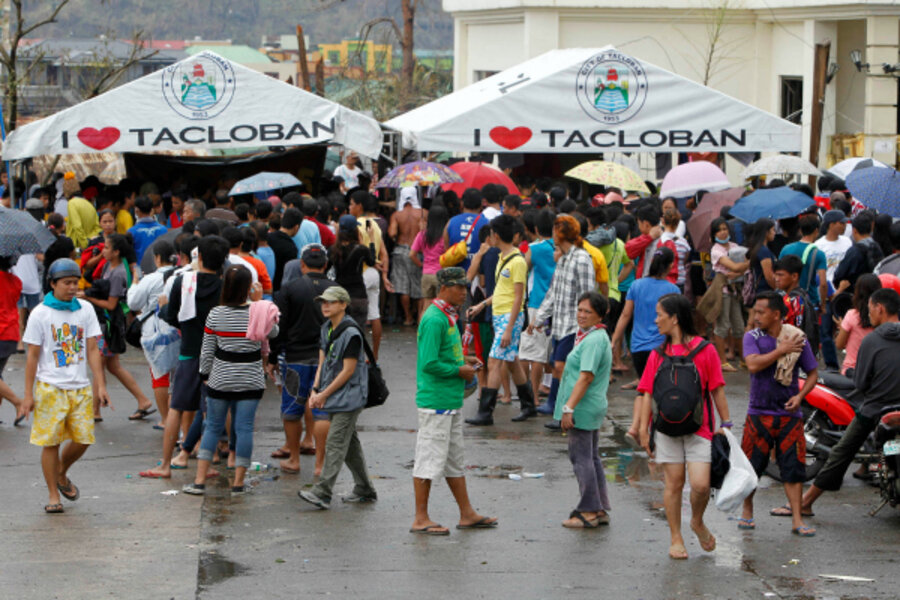How to help with Typhoon Haiyan relief in the Philippines
Loading...
International relief organizations are scrambling to get to devastated areas in the central Philippines to join relief and recovery efforts after Friday’s typhoon left 10,000 dead, according to news reports. Many American groups are also raising money to support the survivors of Typhoon Haiyan.
The Chronicle talked with Robert Ottenhoff, president of the Center for Disaster Philanthropy about what is happening and how donors and nonprofits can avoid mistakes.
This is the first big international disaster since your group was founded in August 2012. What are your thoughts on the donor-solicitation or giving efforts so far?
Donors are not as quick to respond to international disasters as they are to domestic. And their interest is in part driven by media coverage. It was interesting: Several weeks ago, we had a huge storm hit India, and the Indian government did a fantastic job of evacuating a million residents. As a result, there were hardly any deaths. As a result, there was very little media coverage.
So it’ll be interesting to see with the Philippines whether media coverage continues. You know, media coverage in disasters is what drives donations.
It is slower than domestic in part because there are a lot fewer donors who are active in international activities, and those that are don’t primarily consider themselves disaster philanthropists. What we often hear is that donors will say, “We don’t get involved in disasters.”
Until donors can draw a direct link to their normal grant programs, it’s a little bit more difficult for them to get involved in disasters unless it happens to be a disaster in their community or an area where they’ve got some direct contact.
So it was easier for donors to make a decision to get involved with Katrina or Sandy or Moore, Okla., because they had some connections to that. It’s harder for most of them to make the connection with the Philippines or Vietnam.
What are relief organizations saying? What are they doing right? Could they do more?
It’s too early to tell. At this point, we know that it has been extremely difficult for the relief organizations to reach the affected areas, and so relief supplies are badly needed.
What is your group doing for the typhoon?
We’ve established a CDP Typhoon Haiyan Recovery Fund.
The goal of our fund is going to be to focus on midterm and long-term needs. One of the things that’s becoming apparent in recent years as we learn more about disaster philanthropy is that almost all of the money is donated within two to three months. And very little comes after 90 days. And yet there are emerging urgent needs. This was apparent in Katrina, Sandy, Haiti, the [Southeast Asian] tsunami, you name it.
In the Philippines, it’s such basic things—hundreds of thousands are going to be left without homes, without farms, without other ways for livelihood. We want to focus our dollars on the long-term recovery needs. So we’re not saying either-or. It ought to be both for donors.
What’s the best avenue for nonprofits to help? What should they tell their supporters?
They should probably get in touch with some of the organizations that are doing this work and have an existing presence in the Philippines. What we don’t encourage is sending volunteers. There’s been too many untrained, unorganized volunteers coming to disaster areas, and that just adds a huge burden to the local relief workers. So don’t send volunteers. And don’t send goods and products, unless they’ve made some arrangement or determine that these are goods that are actually needed.
We would recommend cash donations to organizations that have experience with disaster relief and an existing presence in the Philippines.
What’s the biggest misconception about disaster giving?
The biggest one we hear is that someone gives a contribution and then assumes that everything is OK. That a million or $10 million or $20 million are given, and therefore whatever is wrong must have been corrected. That’s one misconception.
The second misconception we’re beginning to realize is we can’t keep putting all of our dollars into relief. More philanthropic dollars need to be put into planning, preparation, and mitigation.
What could be things we could be doing to adapt or to avoid, to make some changes where we’re building, where we’re living, so that when these storms, which will happen, which are inevitable and getting bigger and more frequent all the time, there isn’t going to be the same death and destruction.
• The Center for Disaster Philanthropy is keeping track of international relief organizations’ response to the Haiyan recovery efforts.
• This article originally appeared at The Chronicle of Philanthropy.







